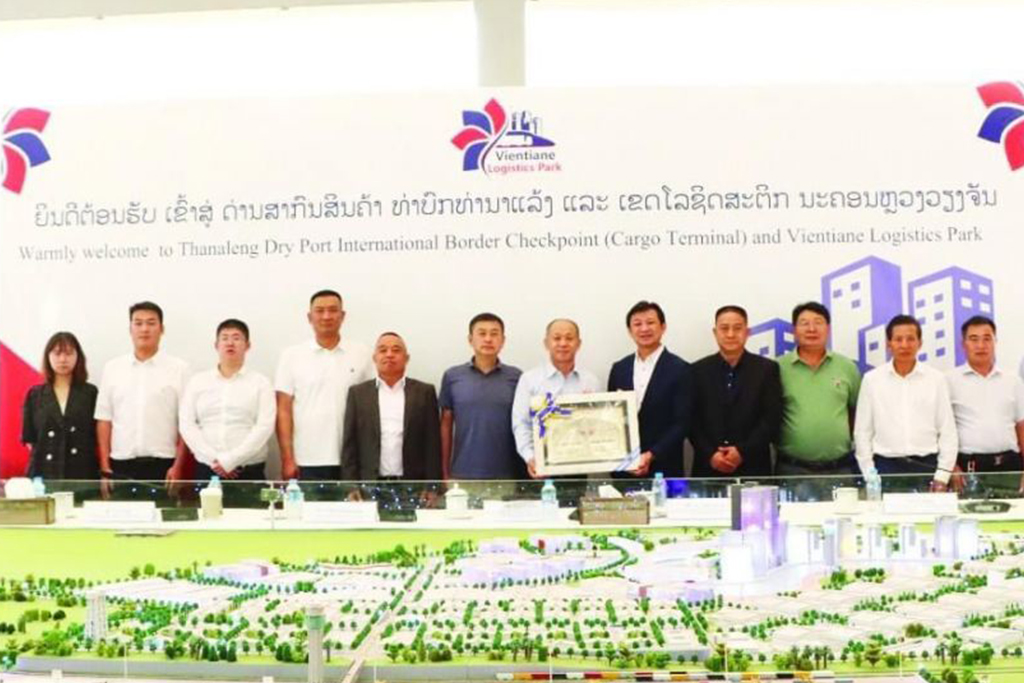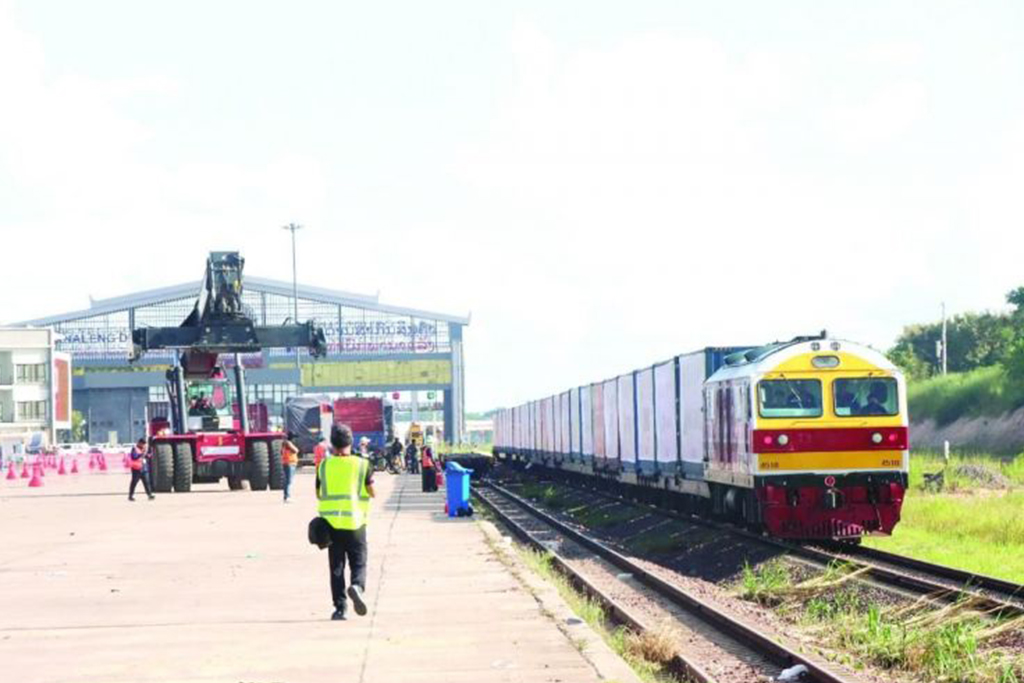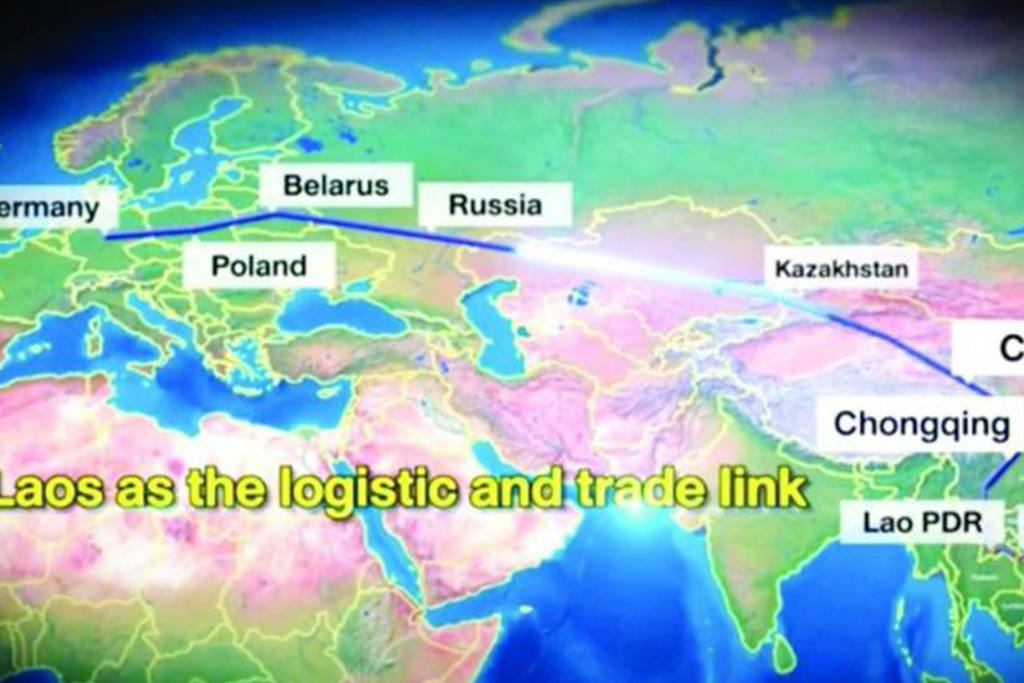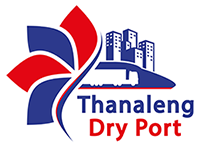

Chinese delegates visit Thanaleng Dry Port in search of potential cooperation, opportunities
Amid growing interest across the region in opportunities offered by the Laos-China Railway, an important trade link between China and Southeast Asia, Chinese executives travelled to Laos to explore potential cooperation and opportunities.
As part of their visit, more than 10 delegates and business executives from China’s Yunnan province early this week visited Vientiane Logistics Park (VLP) and Thalaleng Dry Port (TDP) in Vientiane, where extensions of the Laos-China Railway and Laos-Thailand Railway meet.

While meeting with executives of Vientiane Logistics Park Co Ltd, Mr Liu Jinxin, Member of Yunnan Provincial Committee of Democratic Revolution, Kunming South Asia and Southeast Asia International
Logistics Institute President, said their trip was focused on discussions with the Lao side on transport cooperation, and opportunities and industrial development along the railway corridors.
“The Chinese side is very much interested in this visit,” he said through an interpreter.
The visit is the first ever to Laos by a Chinese delegation to discuss such issues after the Laos-China Railway – part of the global transport infrastructure project, the Belt and Road Initiative – was opened for service almost a year ago.
Welcoming the guests, Mr Chanthone Sitthixay, Chairman of Vientiane Logistics Park, said his business group has been developing four dry ports – one each in Vientiane and the provinces of Borikhamxay, Khammuan and Bokeo.
In addition, his company has been given a green light to partner with the Lao and Vietnamese governments to develop and operate the packaged Lao Logistics Link (LLL) project. It includes the Vientiane Logistics Park, Thalaleng Dry Port, Vung Ang seaport in Vietnam’s central Ha Tinh province, a planned railway line linking the seaport to the Lao capital of Vientiane, and a planned dry port in Khammuan province.

The Lao developer expects to fully realise the LLL project within the next five years.
“Once all these projects (within LLL) are fully completed as targeted, Laos will become an important connector for the region,” said Mr Chanthone, who is also Chairman of the Board of Directors of PetroTrade, the Lao developer of the LLL.
The LLL project is part of efforts to realise the Lao government’s policy to transform Laos from a land-locked to a land-link country, which is striving to become an important transport and logistics connector for countries in the region.
Since its inauguration for service in December last year, the LLL’s Thanaleng Dry Port and Vientiane Logistics Park – the only one-stop customs clearance for cross-border logistics on the railways – has increasingly recorded busier services.
In the first nine months of this year, as many as 41,000 containers (import, export and transit) passed through the Thanaleng Dry Port. This new multimodal transport node serves as a major link between various logistics centres in the region, facilitating cross-border and transit services between countries such as Vietnam, Cambodia, Myanmar, Malaysia, Singapore, Thailand and China.
Through Vung Ang seaport, where the Vietnam government has agreed to increase Laos’ share to 60 percent, the world-class Thanaleng Dry Port is also offering an option to facilitate cargo exports to countries in the Pacific region.
With the growing popularity of rail transport, which significantly shortens travel time compared to sea routes, the Lao developer is optimistic that Laos, as a transit hub, would become an important supply chain for the region.
According to China Railway’s Kunming bureau, the total quantity of freight transported by the Laos-China Railway exceeded 10 million tonnes as of November 7. Within the total, the cross-border cargo transportation volume topped 1.8 million tonnes, with its value hitting 12 billion yuan (US$1.7 billion), Global Times reported.
Chinese guests visit the operations room at the Thanaleng Dry Port. A train on the Laos-Thailand Railway arrives at the Thanaleng Dry Port. (File Photo)
The Chinese delegation’s visit comes at a time when China is looking to expand its economic cooperation with the region.
In Yunnan, Tengjun International Dry Port has increasingly registered more services, the Chinese guests said.
The delegates informed their host that they plan to build dry ports near the borders with Myanmar, Laos (in Mohan) and Vietnam, which could cover the Southeast Asian region.
The visiting executives are from different sectors, including representatives of Yunnan Haohong Logistics Group, Kunming Institute of International Finance, Yunnan Tengjin Logistics Co Ltd, Yunnan Huofa Group Yuxi Xiaoma Guoju Technology Co Ltd, and the China-Laos-Thailand Railway Corridor Research Office of the Kunming South Asia and Southeast Asia International Logistics Research Institute

